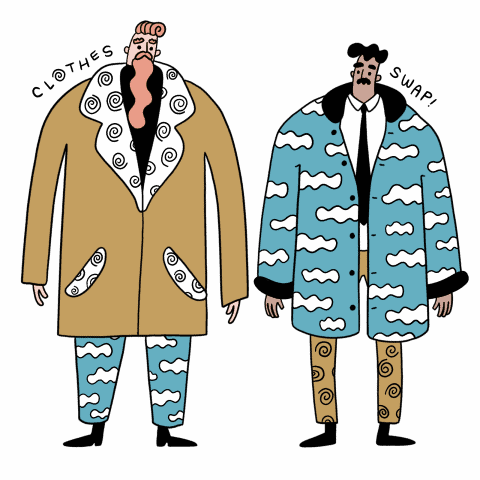 This semester, University of Saskatchewan students can ditch any unwanted clothes for some new-to-them used pieces in a series of campus clothing swaps. The event hosts, the U of S Students’ Union and the U of S Office of Sustainability, hope to give financially insecure students easier access to clothing.
This semester, University of Saskatchewan students can ditch any unwanted clothes for some new-to-them used pieces in a series of campus clothing swaps. The event hosts, the U of S Students’ Union and the U of S Office of Sustainability, hope to give financially insecure students easier access to clothing.
The first clothing swap will take place on Oct. 12 in the North Concourse of Place Riel during Campus Sustainability Week, an annual USOS campaign which aims to encourage students to think critically about their consumption habits and their ability to impact the environment. As part of this goal, the clothing swap allows students to trade unwanted clothing articles, instead of throwing them out.
Matt Wolsfeld, USOS community engagement co-ordinator, explains that the event originated as a by-product of another of the office’s initiatives.
“The clothing swap was actually a secondary effect of a refugee clothing drive we had in 2015, when there was a large influx of Syrian refugees in Saskatoon,” Wolsfeld said. “We had some leftover clothes from donations and figured there was a better way we could give it back to the campus, without having to sell it or make it harder for people who needed it to get it.”
The USSU is also hosting a farmers’ market in Place Riel’s North Concourse on the same day as the clothing swap. Rose Wu, USSU vice-president student affairs, hopes that having the two events at the same time will increase student participation in both.
“This is the first time we are trying it monthly and at the same time as the Farmer’s Market to get both audiences in the same place,” Wu said. “It’s low maintenance and an important initiative — we just need to get the word out.”
Wolsfeld explains that the importance of the clothing swap is two-fold, as it has both environmental and social benefits.
“Instead of [having] these old clothes put into the landfill, we have them going to somebody who will likely wear them again,” Wolsfeld said. “We are trying to make clothing more accessible to an economically insecure student population.”
In an effort to increase the social benefits of the event, Wu says that she would like to see more specialized clothing offered in the clothing swaps this year.
“It would be nice if people could donate professional clothes,” Wu said. “Also, most exchange students need to get warmer clothes for the winter, and they are so expensive.”
Wolsfeld believes that the clothing swap has potential to be a regularly occurring event on campus, beyond this semester.
“With people willing to participate, volunteer and be excited over it, we could turn it into something nicer and regular,” Wolsfeld said. “There are other schools that offer a free store through their student union. We don’t have any expectation of having that sort of thing soon [because] it requires resources, but I think the logical end would be working towards self-sustainment.”
For students interested in participating in this and other sustainability initiatives, Wolsfeld recommends contacting the USSU Sustainability Committee, which has been granted a $15,000 budget this year to fund student events. Students can go to the committee’s online application to apply for funding.
Students can drop off clothing donations at the USSU office before or on the day of the event and exchange them for other donated garments. In addition to the clothing swap on Oct. 12, there will also be swaps on Nov. 23 and Dec. 14, from 9 a.m. to 2 p.m. in the North Concourse of Place Riel.
—
Ana Cristina Camacho / Staff Writer
Graphic: Jaymie Stachyruk / Graphics Editor